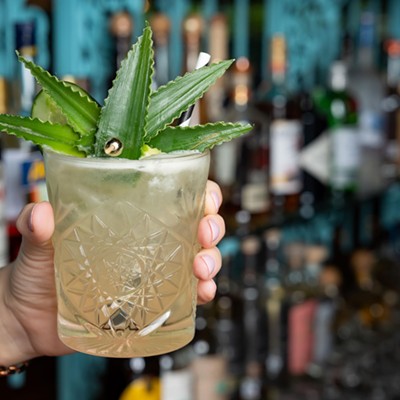To find out, a trip to Schulenburg and the recently revived Sengelmann Hall is in order. Schulenburg lies exactly halfway between San Antonio and Houston along Interstate 10. While the small town itself was formally established in 1875, Czech and German settlers had already made their homes there for several decades prior and had brought with them the culinary heritage of their homelands in central and eastern Europe.
Kolaches, sausages, goulash and schnitzel -- all the delicious meals from the old world -- were brilliantly recreated in Texas. They were served alongside raucous polka music and the flowing taps of German-style beer at Sengelmann Hall during the late 1800s and throughout the turn of the century. But as rail began to wither in Schulenburg, so did the town itself. Eventually, the main dance hall was closed, in 1949, and remained so until Dana Harper and his family purchased it and began restoring it.
Sixty years after its closing, the 115-year-old Sengelmann Hall is open for business once again. In addition to live music and dancing, the new owners have also opened up a Czech bakery, German biergarten and a restaurant that incorporates the best of both worlds. The Sengelmann Hall restaurant served its first meal on June 4 from a compact yet diverse menu that encourages people to order their food "pul-a-pul" style - half of one dish and half of another with a side of rye bread.
Andrea Lazar, a rarely seen but influential force behind Houston restaurants Reef, t'afia and Little Big's and roaster Katz's Coffee, consulted on the menu. The head chef, Kenny Kopecky, is a born-and-bred Schulenburg boy, while Dana Harper's wife, Hana Hillerova Harper, hails from Prague. Between Kopecky, Harper and Lazar, the menu is a fascinating blend of Texan and European fare.
Appetizers range from latkes with dill sour cream and applesauce to topinka, which is thick-cut rye bread that's been fried in duck fat and rubbed with garlic. Entrees are similarly European, but with a Texas flair: beef and pork goulash stewed in pilsner; rabbit two ways, braised with whole-grain mustard sauce and wrapped in prosciutto; and an odd Texas-German-Czech hybrid of chicken jaeger schnitzel served with poppyseed noodles. Also of note on the menu is the 1800s Texas Beef Chili, which holds a claim to be the very first recipe for chili in Texas.
True to the style of the other restaurants where Lazar has had a hand, Sengelmann Hall also uses meat, produce and fruit from area farms and ranches as often as possible. Its beef currently comes from ranches in Schulenburg's Fayette County, which isn't surprising, as the county, with its verdant, rolling pastures, is the No. 3 beef producer in the state.
Next door to the restaurant lies the biergarten and saloon, which features 14 different beers on tap and -- as has become the standard in all hip new bars -- classic Prohibition-era cocktails. It remains to be seen whether or not Sengelmann Hall will become the destination restaurant that its founders hope it will be, but with the success of other Hill Country destinations like The Inn at Dos Brisas and the many restaurants in Fredericksburg, things are looking up for the little old dance hall once again.
For more photos of Sengelmann Hall, click here.





